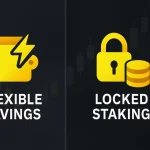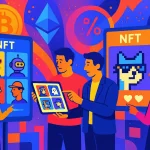Blockchain is often discussed through the lens of price charts and speculation. Yet beyond the headlines, a quieter revolution is unfolding where enterprises, institutions, and governments use distributed ledgers to solve practical problems. In this guide, we’ll tour proven, real-world blockchain success stories—projects with measurable outcomes, production users, or regulatory traction—and extract the patterns that separate hype from genuine value.
Key takeaway: Real-World Blockchain Success Stories are less about novelty and more about reducing settlement times, improving auditability, and creating interoperable data rails that cut costs and fraud.
What makes a blockchain deployment a “success” in the real world
- It’s live in production or has completed significant pilots with clear KPIs.
- It integrates with existing systems and rules (bank-grade compliance, supply-chain standards, healthcare regulations, etc.).
- It demonstrates ROI through faster settlement, fewer disputes, reduced reconciliation, better traceability, or new revenue.
- It measurably improves user experience—fewer middlemen, instant verification, and transparent audit trails.
Below are concrete categories where blockchain is already delivering value.
Payments and settlement where speed and certainty matter
-
JP Morgan Onyx and JPM Coin: JP Morgan’s Onyx platform uses a permissioned blockchain to enable institutional clients to move value and information with improved speed and 24/7 availability. Use cases include intraday liquidity and cross-border treasury movements, reducing friction that historically required batch processes. Source: Onyx by JP Morgan.
-
Visa’s USDC settlement pilots: Visa expanded experiments using USDC on Ethereum and Solana to settle with acquirers like Worldpay and Nuvei. While card rails remain dominant, the pilot shows how stablecoins can act as programmable treasury tools for merchant settlement. Source: Visa corporate blog.
-
PayPal USD (PYUSD): PayPal introduced PYUSD, a regulated stablecoin redeemable 1:1 for USD, and has enabled transfers to compatible wallets and platforms. This bridges mainstream fintech UX with on-chain rails for developers. Source: PayPal newsroom.
-
Stellar and MoneyGram Access: Cash-to-crypto and crypto-to-cash corridors powered by Stellar allow remittance flows to benefit from near-instant settlement with physical cash pickup—a practical on-ramp/off-ramp many communities need. Source: MoneyGram and Stellar Foundation.
Why it works: Stablecoins and permissioned bank chains slash reconciliation time and enable programmable flows, all while fitting within compliance frameworks.
Supply chain and provenance where trust is thin and paperwork is thick
-
Walmart + IBM Food Trust: Walmart has used blockchain-based traceability to cut the time to track mangoes from days to seconds. By linking farm-to-shelf data, recalls and safety checks speed up, strengthening consumer trust. Source: Walmart and IBM Food Trust.
-
Carrefour provenance labels: Carrefour uses blockchain to let shoppers scan and view the journey of poultry, eggs, and produce—reinforcing brand transparency in European markets. Source: Carrefour corporate announcements.
-
De Beers Tracr: The diamond industry’s Tracr platform runs at scale to secure provenance data from mine to retail, combating conflict diamonds and fraud with tamper-evident histories. Source: De Beers Group.
-
MediLedger for pharma: Chronicled’s MediLedger Network helps manufacturers and wholesalers verify drug identifiers, supporting compliance with the U.S. Drug Supply Chain Security Act and reducing counterfeits. Source: Chronicled/MediLedger.
Why it works: Shared, permissioned data layers replace email-and-spreadsheet spaghetti, enabling real-time verification across firms that don’t fully trust one another.
Capital markets and tokenization of real assets
-
Franklin Templeton’s on-chain money market fund: Franklin OnChain U.S. Government Money Fund issues a blockchain-recorded share class, streamlining transfer agency and enabling programmable features. Source: Franklin Templeton.
-
Siemens digital bond: Siemens issued a digital bond registered on a public blockchain, removing paper-based processes and enabling faster distribution and settlement. Source: Siemens press.
-
European Investment Bank (EIB) digital bonds: EIB has issued multiple digitally native bonds, experimenting with public-permissioned hybrids and on-chain registries that promise near-instant DvP (delivery versus payment). Source: EIB announcements.
-
Hong Kong tokenized green bond: The HKMA coordinated a tokenized green bond that demonstrated atomic settlement and programmability for coupon payments and reporting. Source: HKMA.
Why it works: Tokenization simplifies cap tables, automates cash flow logic, and reduces intermediaries in issuance and lifecycle management—especially potent for private markets and funds.
Identity and public sector integrity
-
Estonia’s KSI-backed integrity layer: Estonia uses blockchain-based data integrity (KSI) across public records, ensuring that tampering attempts are detectable without exposing private data. Source: e-Estonia/Guardtime.
-
Georgia land registry pilot: The National Agency of Public Registry explored blockchain to timestamp and secure land titles, aiming to reduce disputes and improve transparency. Source: Bitfury/Georgia.
-
Brazil’s customs blockchain: Receita Federal’s bConnect initiative uses distributed ledgers for secure information exchange in customs operations, improving data reliability between agencies. Source: Brazilian Federal Revenue Service.
Why it works: Auditable data integrity beats paperwork, especially where multi-agency access and non-repudiation matter.
Energy and sustainability
-
Energy Web Chain and grid credentials: Energy Web collaborates with utilities and operators to issue decentralized identities for devices and certify renewable energy attributes, enabling proof-of-origin and flexible demand response. Source: Energy Web Foundation.
-
Renewable energy certificates (RECs) in Asia: Singapore’s SP Group launched a blockchain-based REC marketplace, simplifying issuance and retirement with transparent audit trails. Source: SP Group.
-
Public transparency pilots: Chile’s National Energy Commission experimented with recording energy data on-chain to boost trust in reported figures. Source: CNE Chile.
Why it works: Energy markets need verifiable proofs of generation, consumption, and device credentials. Blockchains create shared truth across participants with conflicting incentives.
Media, loyalty, and NFTs beyond the hype cycle
-
Starbucks Odyssey: A loyalty program that uses digital collectibles to gamify engagement, granting access to experiences and rewards while abstracting crypto complexity behind a clean UX. Source: Starbucks.
-
Nike .SWOOSH: Nike’s digital creations platform experiments with co-creation and ownership, integrating collectibles into product stories and community benefits. Source: Nike.
-
Ticketmaster event collectibles: Large-event partners minted digital keepsakes tied to tickets, opening paths to verified fan benefits and secondary market provenance. Source: Ticketmaster.
Why it works: When NFTs show up as loyalty and access primitives—not speculation—they fit neatly into customer journeys.
CBDCs and cross-border corridors
-
The Bahamas Sand Dollar: A live retail CBDC with wallet-based payments to reach underbanked communities and modernize payment rails. Source: Central Bank of The Bahamas.
-
BIS Project mBridge: The BIS Innovation Hub with the HKMA, Bank of Thailand, and others trialed cross-border wholesale CBDC corridors to reduce FX settlement friction. Source: BIS mBridge.
-
Regional experiments: Multiple central banks have issued or piloted CBDCs focused on faster payments, financial inclusion, and programmable compliance.
Why it works: CBDCs explore sovereign-grade, programmable money that can interoperate across borders with policy controls that traditional messaging rails struggle to express.
Patterns behind Real-World Blockchain Success Stories
- Clear problem focus: Winners start with a measurable pain point (settlement delays, counterfeit risk, manual reconciliation).
- Right chain for the job: Permissioned networks thrive in regulated data sharing; public chains excel for open access, composability, and tokenization.
- Compliance-first design: KYC/AML, DSCSA, and securities laws are integral—not afterthoughts.
- UX abstraction: Users don’t need to see wallets and seed phrases; they need smooth onboarding and familiar flows.
- Data and governance: On-chain data structures matter less than credible governance, data standards, and roles.
Real success equals governance + integration + compliance + UX—not just code.
How to participate without getting lost in the noise
-
For business leaders
- Start with a single KPI. Example: reduce settlement time from T+2 to T+0, or shrink traceability cycles from days to minutes.
- Pick the smallest viable network that connects key partners; expand once governance and data schemas settle.
- Design for audits and regulators from day one.
-
For developers and product teams
- Treat wallets and keys as UX problems. Custody, recovery, and permissions should fit user mental models.
- Build with interoperability in mind—standards like ERC-20/ERC-3643, W3C Verifiable Credentials, GS1 for supply chains.
- Log everything. Observability and analytics are crucial for regulated workloads.
-
For analysts and learners
- Follow sectors with strong regulatory hooks: healthcare, capital markets, and energy.
- Track stablecoin settlement growth and tokenized fund AUM rather than short-term price moves.
Getting hands-on with on-chain markets
If you want to explore crypto markets that power many of these rails, consider using an exchange with deep liquidity, multiple trading pairs, and robust security. New users can register through this referral link and code to get started:
- BTCC signup with code NEWER
- Use referral code NEWER during registration to access promotions for new accounts.
Why BTCC
– Longevity and reliability: BTCC is one of the long-standing platforms in the industry.
– Feature-rich: Spot, derivatives, and tools suited to both early learners and advanced traders.
– Security and compliance-first mindset.
Note: Trading digital assets involves risk. Do your own research and use proper risk controls. Nothing here is financial advice.
Quick FAQ about Real-World Blockchain Success Stories
-
Aren’t most blockchains too slow or expensive? Many production deployments use permissioned chains or L2s optimized for throughput and cost. Public networks continue to scale via rollups and improved data availability.
-
What about failed consortia? Not every initiative succeeds; governance and incentives are hard. The successes above typically solve a narrow, high-value problem with aligned participants.
-
Do users need to understand crypto? No. The best deployments hide complexity: familiar apps, clear permissions, and automatic compliance checks.
-
How do I measure ROI? Look for cycle-time reductions, lower dispute rates, reduced capital lockups, and fewer manual reconciliations.
-
Can tokenization help private markets? Yes. Automated compliance and on-chain transfer restrictions let private assets gain liquidity under existing rules.
A practical checklist to spot real value
- Is there a pre-existing process with measurable pain?
- Does the chain choice match data-sharing and regulatory needs?
- Are governance and data standards defined?
- Is the UX abstracted enough for mainstream users?
- Are metrics for settlement time, disputes, and audits tracked?
Keep this checklist handy as you evaluate new case studies and pilots across payments, supply chain, capital markets, identity, and energy. When in doubt, follow the metrics and the users—not the hype. And if you’re ready to explore market infrastructure firsthand, open an account via BTCC signup with code NEWER and start learning by doing.





